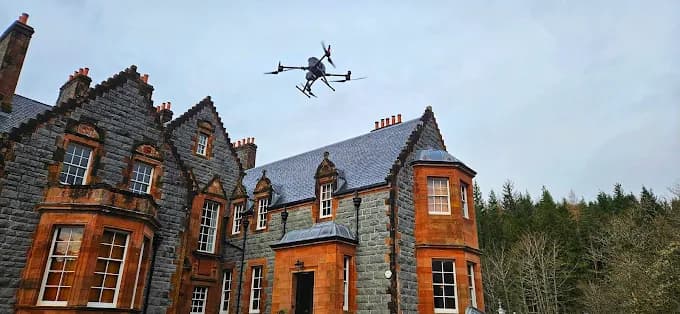
You've probably wondered if a drone roof inspection can actually spot that troublesome leak in your roof, especially here in the UK where our weather seems determined to find a way in.
While these flying cameras have revolutionized property inspections, their effectiveness for water damage detection isn't straightforward.
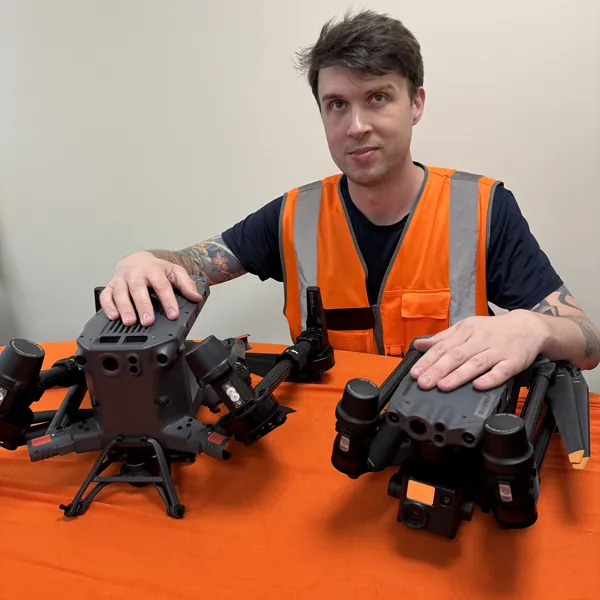
They can certainly identify obvious signs like missing shingles, but what about those sneaky leaks hiding beneath the surface?
The answer, I've found, depends on looking beyond what the eye can see.
30 Second Summary
- Standard drone cameras can identify visible signs of roof leaks including missing shingles, damaged flashing, and water stains.
- Thermal imaging drones detect temperature variations that reveal hidden moisture beneath intact-looking roofing materials.
- Drone inspections can spot early-stage problems before they cause extensive damage but may miss deeply concealed leaks.
- Different roofing materials present varying challenges, with flat surfaces showing moisture more clearly than textured materials.
- While effective for identifying potential leak sources, drones cannot physically test material integrity or probe suspicious areas.
Standard drone cameras can spot visible signs of roof leaks
Standard drone cameras have revolutionized how we detect roof problems before they become costly disasters. These drones capture high-resolution images that reveal visible signs of water damage, including missing shingles, curled edges, damaged flashing, and sagging sections.
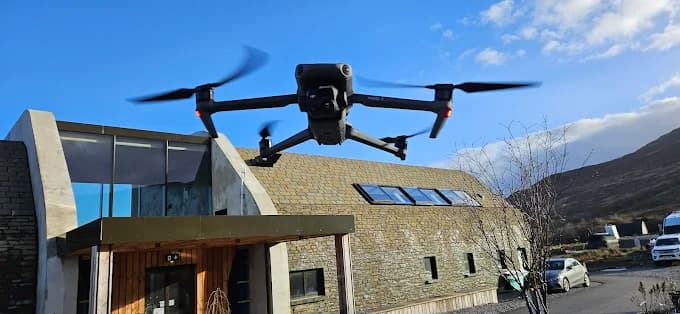
What Kinds of Visible Damage Do Drones Find?
You'll see colour changes in your roofing materials through drone footage—dark patches often indicate moisture penetration.
Here in the UK, I'm always on the lookout for heavy moss growth, particularly on north-facing roof slopes, as it's a classic sign that moisture is being retained.
Drones can also identify clogged gutters and downspouts that prevent proper drainage, a common culprit for damp issues.
When flying at different angles, drones capture sunlight reflections that might expose subtle depressions where water pools. Most importantly, you can spot these issues while keeping your feet safely on the ground.
Regular drone inspections create a visual record of your roof's condition, helping you track deterioration patterns before leaks develop inside your home.
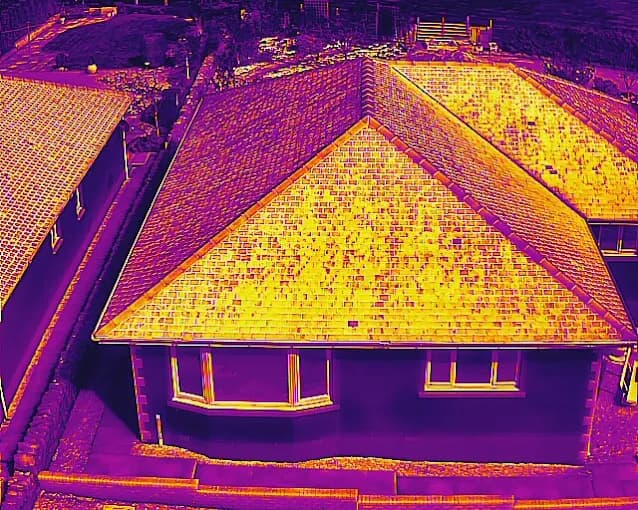
Thermal imaging drones detect hidden moisture and water damage in your roof
Where standard cameras fall short, thermal imaging drones excel by revealing what's invisible to the naked eye.
Honestly, this is where the real value is for UK homes. I've lost count of the properties I've surveyed that looked perfectly fine visually, but the thermal camera lit up with signs of trapped moisture. It's a constant battle against the damp in our climate.
How Thermal Imaging Reveals Hidden Problems
Water retains heat differently than dry materials, creating thermal anomalies that appear as distinct colour patterns on infrared images. You'll see potential leaks as cool blue spots during daytime inspections (when moisture evaporates and cools the surface) or warm yellow areas at night (when trapped moisture releases stored heat).
Thermal drones can detect problems long before visible damage appears, including:
Hidden moisture under seemingly intact shingles
Water infiltration beneath waterproof membranes
Compromised insulation from previous leaks
Heat loss through damaged sections
This early detection capability saves you thousands in potential repair costs by addressing issues before structural damage occurs.
Drone Technology Comparison
Drone Type | What It Sees | Best For Detecting | Limitations |
|---|---|---|---|
Standard (Visual) | Visible light, colors | Missing shingles, cracks, debris | Can't see under the surface |
Thermal (Infrared) | Heat signatures | Hidden moisture, insulation gaps | Needs temperature contrast |
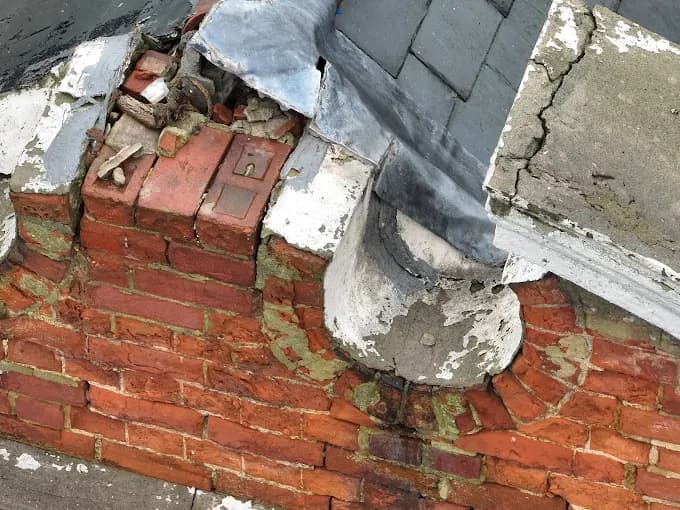
Certain roof materials reveal leaks more clearly in drone roof surveys
While thermal imaging offers powerful detection capabilities, the roof's material itself significantly affects how easily drones can identify leaks and damage. Flat surfaces like membrane roofing (EPDM, TPO, PVC) typically reveal moisture accumulation with remarkable clarity.
Metal roofs present unique advantages, as water intrusion creates obvious corrosion patterns. Conversely, textured materials like wood shakes or the slate roofs we see so often across the UK make leak detection more challenging.
For slate roofs, a thermal camera is almost essential in my opinion. It's the only way to spot moisture that has crept in underneath without any visible signs of a slipped tile.
Asphalt shingles fall somewhere in between—recent water damage shows up well, but older damage may blend with normal aging patterns. You'll get the most accurate results when your drone operator understands these material-specific characteristics.
Roof Material Suitability for Drone Inspection
Roofing Material | Drone Inspection Clarity | Key Indicators |
|---|---|---|
Flat Membrane | High | Clear temperature pools |
Metal | High | Corrosion, thermal spots |
Asphalt Shingles | Medium | Dark stains, heat spots |
Wood/Slate | Low | Irregular surface patterns |
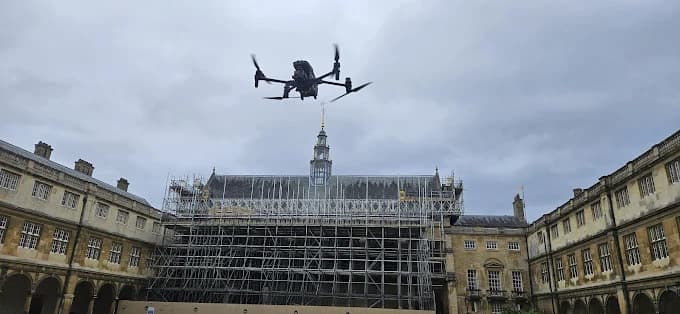
Drone inspections provide accurate leak detection in many cases
How accurately can drones detect roof leaks?
From my experience, modern thermal drones can identify leaks with impressive precision on UK properties. You'll receive detailed footage showing moisture intrusion and temperature variations that are clear indicators of water damage.
Drones excel at detecting water pooling, damaged flashing, and deteriorated seals. Thermal imaging then confirms my suspicions, revealing temperature differences where moisture has penetrated, even when visual signs aren't there.
It’s all about spotting problems in their early stages, before they cause extensive, costly damage.
While drones won't catch every single concealed leak, especially those hidden deep within a structure, they provide a reliable and comprehensive first assessment.
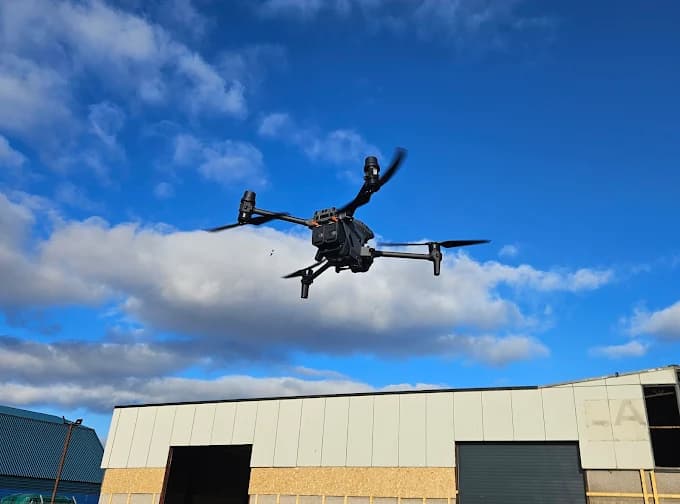
Some limitations mean drones cannot always replace manual roof checks
Despite their impressive capabilities, drones face certain limitations that mean we sometimes need to recommend a follow-up manual inspection.
Physical vs. Visual Inspection
You'll find drones struggle with detecting issues beneath shingles if there's no temperature difference. While they excel at photography, they can't physically test the integrity of materials or probe suspicious areas.
My job as a drone pilot is to give you the best possible view, but I can't press on a roof to feel for soft, spongy spots that indicate rot.
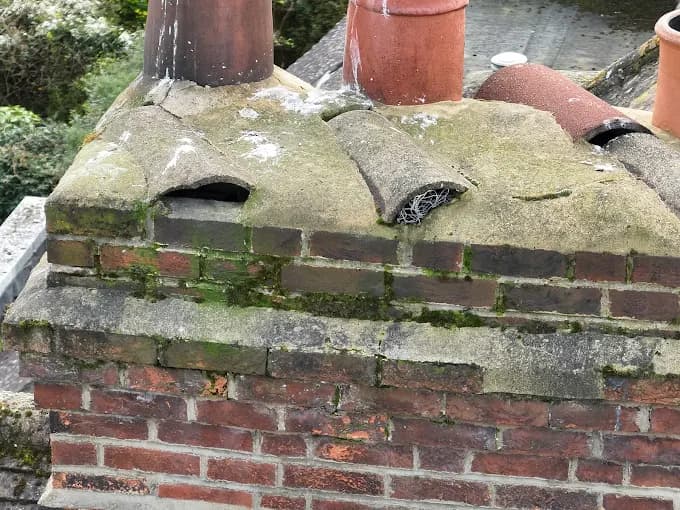
Weather and Environmental Constraints
Weather conditions also restrict drone operations. As you know, the UK weather isn't always on our side, so we have to be opportunistic to find a dry day with low wind for a safe flight.
In some cases, dense tree coverage or complex roof designs with multiple angles create blind spots that cameras simply can't access. For a comprehensive assessment, a professional may need to physically touch the roof, lift shingles, and test for weakness that might indicate water damage beneath the surface.
Inspection Method Showdown: Drone vs. Manual
Method | Advantages | Disadvantages | Best Use Case |
|---|---|---|---|
Drone | Safe, fast, great overview | No physical touch, weather limited | Initial assessment, large roofs |
Manual | Can probe weak spots, tactile | Slower, higher risk, can cause damage | Confirming drone findings |
Frequently Asked Questions
How Much Does a Professional Drone Roof Inspection Cost?
Professional drone roof inspections typically cost between £150 and £400, depending on your roof's size and complexity. You'll pay less for smaller, simpler roofs and more for larger or multi-level structures. Additional services like thermal imaging will increase the price, but I always recommend it in our climate. Always request itemised quotes to compare services.
Do I Need Special Permits for Drone Roof Inspections?
For commercial work in the UK, the drone pilot must have the proper qualifications from the Civil Aviation Authority (CAA), such as an A2 CofC or a GVC, and hold valid insurance. The airspace will also need to be checked. Don't be afraid to ask your inspector to see their credentials; any professional will be happy to provide them.
How Long Does a Typical Drone Roof Inspection Take?
A typical drone roof inspection takes 20-30 minutes of flight time for an average residential property. For larger commercial roofs or complex structures, you'll need to allow 45-60 minutes. Weather and accessibility might extend this timeframe, but you'll receive comprehensive results much faster than traditional methods.
Can Drones Inspect Roofs During Rainy Weather?
No, and I would never fly my equipment in the rain. Rain can damage the drone's electronics, reduce visibility, and create unsafe flying conditions. Moisture also completely interferes with thermal imaging, making accurate leak detection impossible. We always schedule inspections during dry weather for optimal results.
What Qualifications Should a Drone Roof Inspector Have?
A qualified drone roof inspector should hold a valid CAA certification (like a GVC), have solid roofing knowledge, and understand structural damage patterns. They'll need drone piloting experience, insurance coverage, and be skilled with thermal imaging. Look for someone who can interpret the data, not just capture images.
Protect Your Property From Hidden Water Damage
As this article highlights, the damp UK climate makes properties highly susceptible to hidden water damage that a standard visual check can easily miss. A thermal drone inspection is the most effective way to uncover these concealed issues before they cause significant structural problems.
This is precisely the challenge HireDronePilot solves. We connect you with a network of specialists who possess the crucial combination of roofing knowledge, thermal imaging expertise, and CAA certifications required to give you a clear picture of your roof's condition.
As the UK's premier managed marketplace, HireDronePilot is dedicated to connecting businesses with verified professional drone pilots for hire. We streamline drone services through competitive bidding, ensuring quality, compliance, and value for every aerial project across the United Kingdom.
Don't let unseen moisture lead to costly repairs. Find a qualified, local professional by visiting https://hiredronepilot.uk/ to get started.
Post your drone roof inspection job today and receive competitive quotes from certified drone pilots ready to protect your investment.
About the Author

Written by
Peter Leslie
Peter Leslie is a CAA-approved commercial drone pilot with 10+ years experience and over 10,000 flight hours. He holds the GVC and A2 CofC drone licences with full CAA Operational Authorisation. Peter is a member of ARPAS-UK, the UK's non-profit trade association for the drone industry. He founded HireDronePilot to connect UK businesses with qualified, insured drone operators.
Looking for More Drone Work?
Join the UK's leading network of professional drone pilots and grow your business.
Open Access
Bid on any job - all jobs open to all pilots
Grow Revenue
Access high-value commercial projects
Stay Busy
Fill your schedule with regular work
Related Articles

Our Drone Survey Service In Stirling, Scotland
Bringing you Stirling drone survey data from areas no one else can fly.

How Much Does A Drone LiDAR Survey Cost
Forecasting your drone LiDAR survey cost requires understanding what's hidden beyond the initial quote.

Step By Step Process Of Drone LiDAR Survey
Next, discover the crucial post-flight steps that determine your survey's success.
